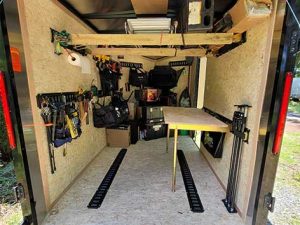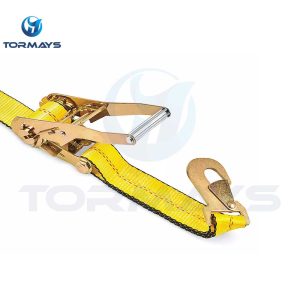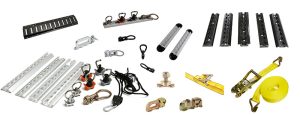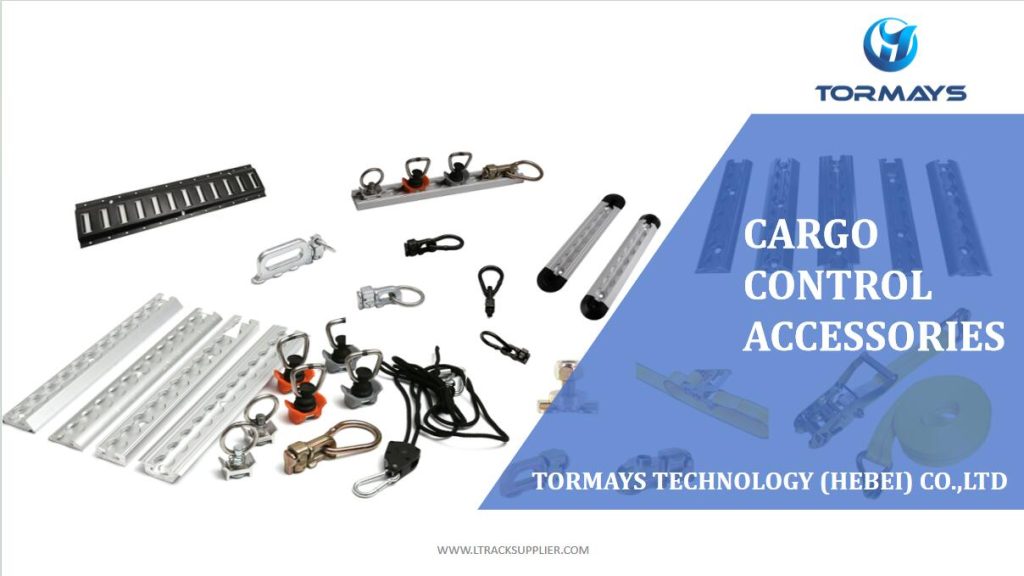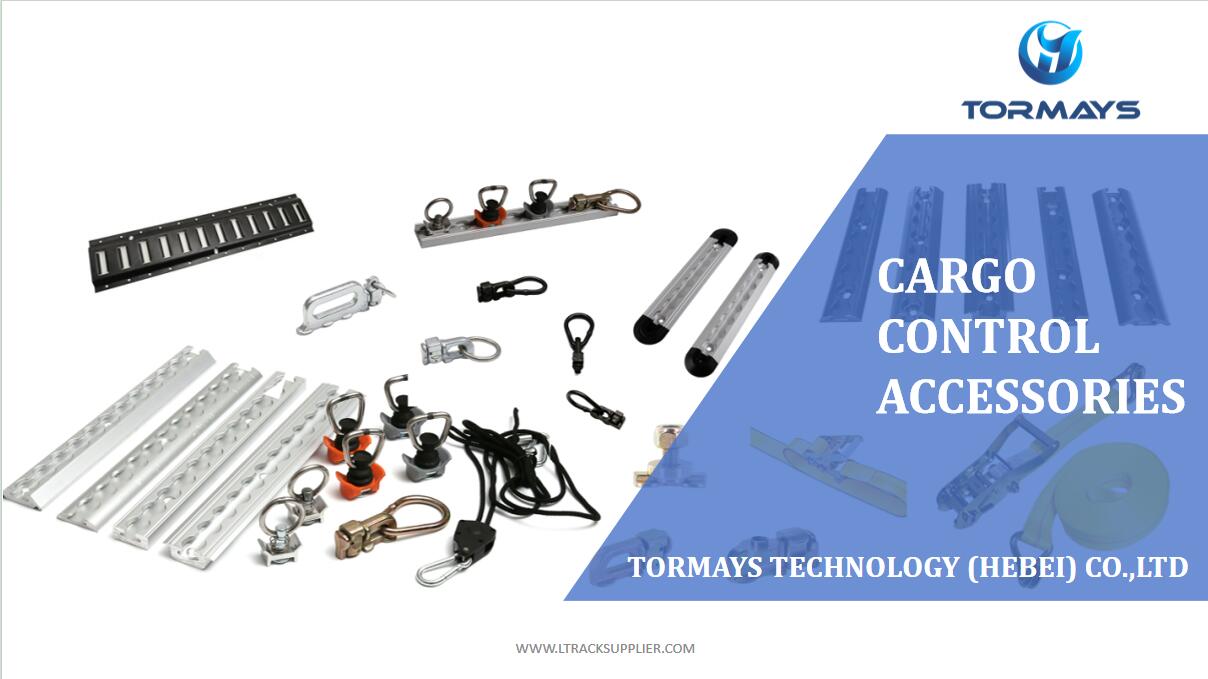Cargo transportation is at the core of today’s logistics and supply chain networks. Whether you are a truck driver, a fleet manager, or a weekend warrior hauling cargo in your pickup truck, securing loads is critical for safety and efficiency. One of the most effective tools for this task is the cargo bar. Designed to keep freight in place, cargo bars for load securement prevent movement, damage, and accidents during transit.

In this in-depth blog, we’ll explore everything about cargo bars, including their types, features, usage, installation tips, and the benefits they offer. By the end of this guide, you’ll have a solid understanding of how to use cargo bars for efficient load securement, no matter the cargo type or transport vehicle.
What Are Cargo Bars for Load Securement?
A cargo bar is a specialized tool used to stabilize and secure loads during transportation. It typically fits between the walls of a truck bed, trailer, or cargo area to prevent shifting. Cargo bars ensure that goods remain firmly in place, minimizing the risk of damage or accidents caused by freight movement.
Cargo bars come in different types, such as adjustable cargo bars, ratchet cargo bars, and telescoping cargo bars, providing flexible solutions for various transportation needs. They are widely used by truckers, freight carriers, and anyone involved in cargo management systems.
Why Is Load Securement Important?
Poor load securement can lead to serious accidents, cargo damage, and even legal penalties. A load that shifts during transit can affect the vehicle’s stability, endanger other drivers on the road, or damage the goods being transported. Proper securement with tools like cargo bars ensures:
– Safety on the road by preventing cargo from falling or shifting.
– Protection of goods from damage during transit.
– Compliance with transportation regulations.
– Improved efficiency by reducing the need for reloading or adjustments.
Types of Cargo Bars
1. Adjustable Cargo Bars
These cargo bars are designed to fit various spaces by adjusting their length. Adjustable cargo bars are ideal for trucks, trailers, and vans with different cargo areas, as they provide a customized fit.
2. Ratchet Cargo Bars
Ratchet cargo bars feature a ratcheting mechanism that makes them easy to install and adjust. The ratchet action ensures a tight, secure fit between surfaces, keeping cargo firmly in place. These are popular for load lock systems in heavy-duty applications.
3. Telescoping Cargo Bars
Telescoping cargo bars can extend and retract, allowing them to fit into spaces of varying widths. These bars are often used in vans, trucks, and trailers where flexibility is required.
4. Load Lock Bars
Also known as load restraint bars, these are heavy-duty cargo bars designed for freight transportation. Load lock bars are essential for stabilizing pallets or large goods in trailers.
5. E-Track Cargo Bars
These bars are designed to work with E-track systems—rails installed inside trucks and trailers. E-track cargo bars provide a secure and adjustable way to lock loads in place within structured cargo areas.
6. Padded Cargo Bars
Padded cargo bars come with rubber or foam padding at the ends to protect delicate surfaces from scratches or damage. These bars are useful when transporting furniture or fragile goods.
7. Heavy-Duty Cargo Bars
Designed for industrial and long-haul applications, heavy-duty cargo bars offer maximum strength and durability. They are made from materials like steel or aluminum to withstand the rigors of heavy freight transportation.
Key Features of Cargo Bars
– Material: Most cargo bars are made from steel or aluminum for strength and durability.
– Adjustability: Many bars are telescoping or ratcheting to fit various cargo areas.
– Padding: Padded cargo bars prevent damage to cargo and vehicle surfaces.
– Ease of Use: Some cargo bars feature quick-release mechanisms for fast installation.
– Compatibility with E-Track Systems: Some bars are specifically designed for use with E-track rails.
How to Use Cargo Bars for Load Securement
Step 1: Choose the Right Cargo Bar
Select a cargo bar that matches your needs—consider the type of vehicle, cargo size, and weight. Ratchet cargo bars are ideal for heavy loads, while padded cargo bars are better for fragile items.
Step 2: Adjust the Length of the Cargo Bar
Extend the telescoping cargo bar or adjust the ratchet mechanism to fit the width of the cargo area.
Step 3: Position the Bar Securely
Place the cargo bar across the width or height of the cargo area to stabilize the load. Ensure that it fits snugly between two walls or surfaces.
Step 4: Lock the Bar in Place
Use the ratchet mechanism or twist lock to secure the bar. For E-track systems, attach the bar to the appropriate rails.
Step 5: Test the Stability
Gently shake the load to ensure the bar is tight and the cargo is secure.
Best Applications for Cargo Bars
1. Truck Beds and Pickup Trucks
Cargo bars are perfect for crossbars in truck beds, keeping tools, boxes, and equipment from sliding.
2. Semi-Trailers and Freight Haulers
Load lock bars and E-track cargo bars are essential for securing pallets and large freight items.
3. Commercial Vans and Delivery Vehicles
Adjustable cargo bars help delivery drivers stabilize packages and prevent shifting during transit.
4. Moving Furniture and Fragile Items
Padded cargo bars offer protection when moving delicate items like furniture or glassware.
Cargo Management Systems and Load Securement Regulations
Using cargo management systems with load securement bars is essential for meeting regulations and ensuring safety. In the U.S., the Federal Motor Carrier Safety Administration (FMCSA) enforces strict rules for load securement. Non-compliance can result in penalties, accidents, or damaged goods.
How to Choose the Right Cargo Bar
– Cargo Weight: For heavy loads, opt for heavy-duty cargo bars made from steel or aluminum.
– Vehicle Type: Use ratchet cargo bars for trailers and padded cargo bars for trucks transporting delicate goods.
– Adjustability: Telescoping cargo bars are ideal for variable cargo sizes and irregular spaces.
– E-Track Compatibility: If your truck or trailer has an E-track system, use E-track cargo bars for secure fitting.
Benefits of Using Cargo Bars for Load Securement
1. Prevents Load Shift: Cargo bars keep items stable, reducing the risk of accidents and damage.
2. Enhances Road Safety: Securing cargo helps prevent dangerous situations on the road.
3. Increases Efficiency: Cargo bars reduce the need to reload items that have shifted.
4. Protects Cargo: Padded cargo bars prevent scratches and damage to delicate items.
5. Compliance: Using cargo bars ensures compliance with FMCSA regulations for load securement.
Maintenance and Care of Cargo Bars
– Inspect for Damage: Regularly check for cracks, bends, or corrosion.
– Clean the Bars: Keep cargo bars clean to prevent dirt buildup, especially on ratchet mechanisms.
– Store Properly: Store cargo bars in a dry place when not in use to prevent rust.
Conclusion: Invest in Cargo Bars for Safe and Secure Transport
Cargo bars are indispensable tools for anyone involved in cargo management systems. Whether you’re hauling freight in a semi-trailer, securing packages in a delivery van, or transporting delicate goods in your pickup truck, the right cargo bar will ensure your load stays secure.
With various options, such as adjustable cargo bars, telescoping cargo bars, and E-track cargo bars, there’s a solution for every need. Invest in quality load lock bars to protect your cargo, enhance road safety, and comply with load securement regulations.
By following the tips and guidelines in this comprehensive guide, you’ll be well-equipped to select, install, and maintain the best cargo bars for your transportation needs. Safe travels!
Frequently Asked Questions (FAQs)
1. What is the difference between a ratchet cargo bar and an adjustable cargo bar?
– A ratchet cargo bar uses a ratcheting mechanism for secure fitting, while an adjustable cargo bar extends manually to fit different spaces.
2. Can cargo bars be used with E-track systems?
– Yes, E-track cargo bars are specifically designed to attach to E-track rails.
3. How do I know if a cargo bar is secure?
– Test the stability by gently shaking the load. If the bar feels tight, the load is secure.

